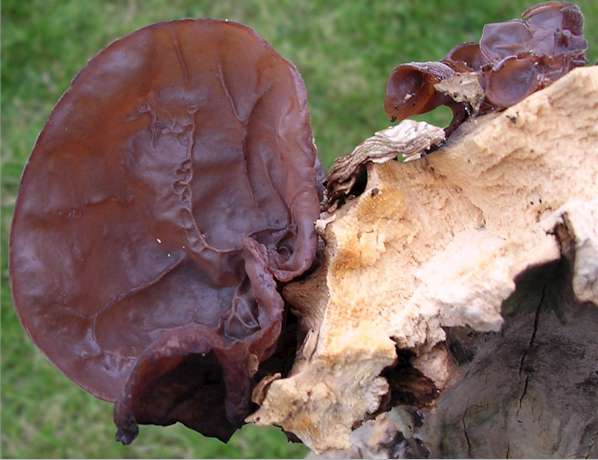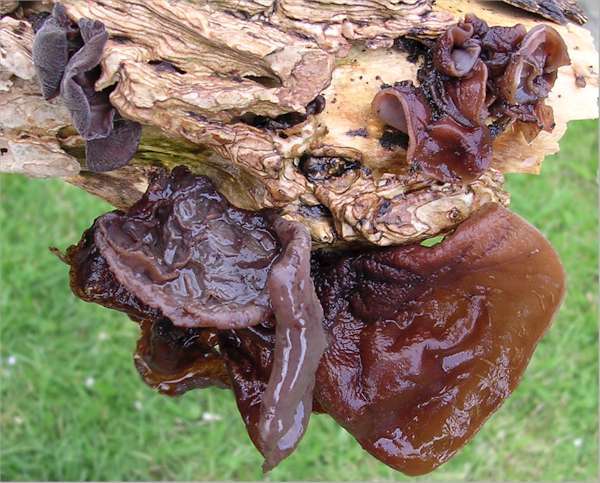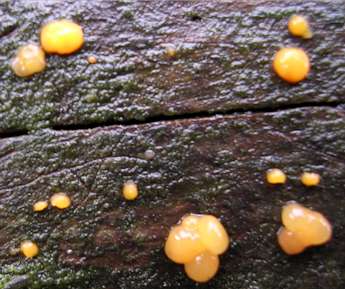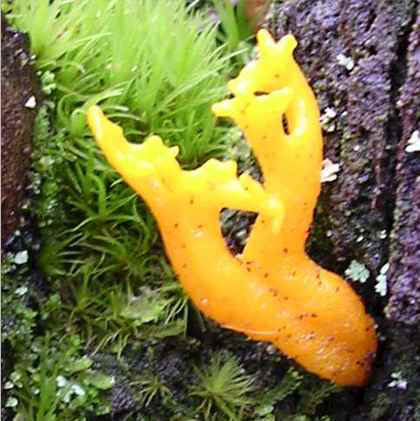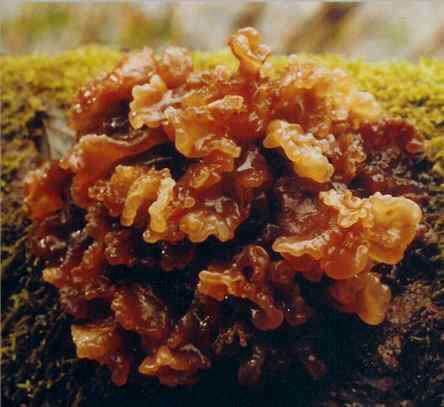..
PROFILES OF FUNGI: JELLY FUNGI (Basidiomycota) The common feature of the jelly fungi is that they produce fruitbodies with a gelatinous consistency. Many of these fungi also have forked basidia or basidia that are divided transversely by septa. The best-known example is the "ear fungus" Auricularia auricula (Figs 1, 2), which is a common saprotroph on elder bushes (Sambucus nigra). The expanded fruitbodies of this fungus often occur in clusters but individual fruitbodies can be up to 10 cm or more. They not only look like an ear but also feel like an ear. In dry conditions, the fruitbodies can shrivel (see Fig. 2) but they re-expand after rains.
Fig 1. An expanded fruitbody of Auricularia auricula growing on a decaying elder branch. [© Jim Deacon]
Fig 2. Auricularia auricula: expanded, gelatinous fruitbodies are seen at right and centre, but fruitbodies on the left are dried and shrivelled. [© Jim Deacon] Another common fungus of this type is Dacrymyces stillatus (Fig. 3), which produces large numbers of small (1-5 mm) yellow or orange cushion-shaped fruitbodies on wet logs and wooden benches.
Fig 3. Dacrymyces stillatus cushions on a wet log. The cushions range from 1-3 mm diameter. [© Jim Deacon] Calocera viscosa (Fig. 4) is very different from the fungi mentioned above, but nevertheless is closely related to Dacrymyces, and again has forked basidia. It grows as a saprotroph on the decaying stumps of coniferous trees, especially pines.
Fig 4. A characteristically forked fruitbody of Calocera viscosa growing from the base of a Scots pine stump. [© Jim Deacon] As a final example, Tremella mesenterica, in the Order Tremellales (Fig. 5) has longitudinally divided basidia. This fungus consists of a mass of gelatinous, folded lobes which are initially yellow but later turn orange. The dried fruitbodies are brittle.
Fig 5. A fruitbody of Tremella mesenterica, about 10 cm across, growing from a dead branch of a fallen beech tree (Fagus sylvatica). [© Jim Deacon] |
